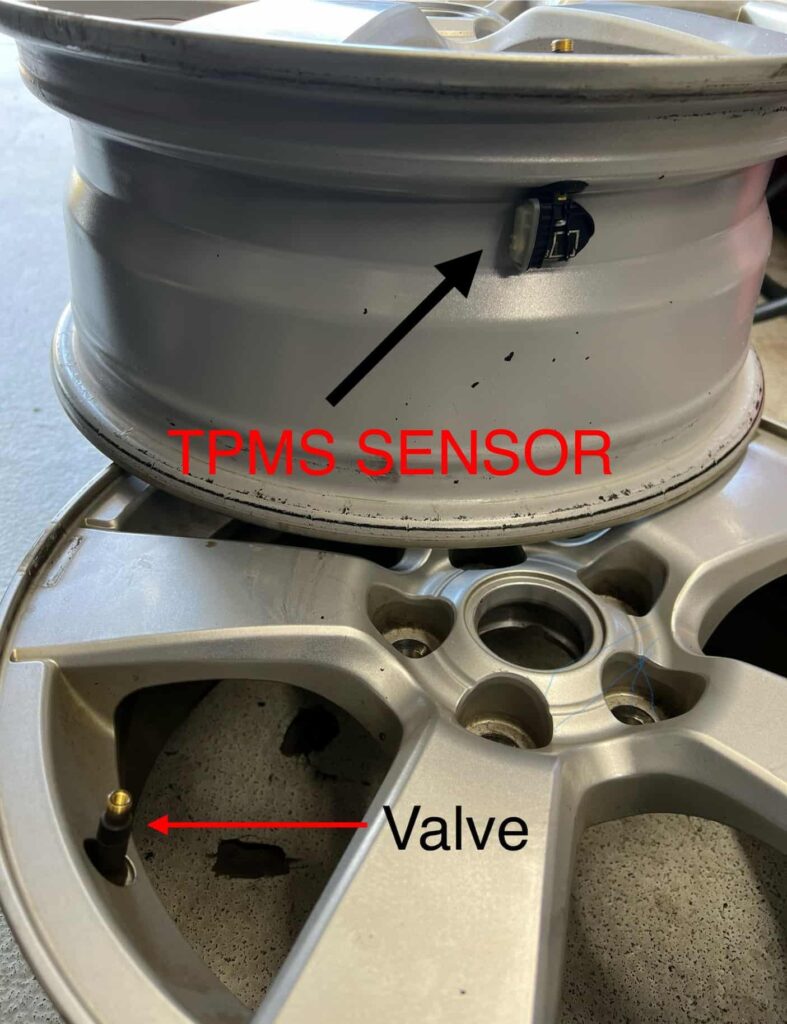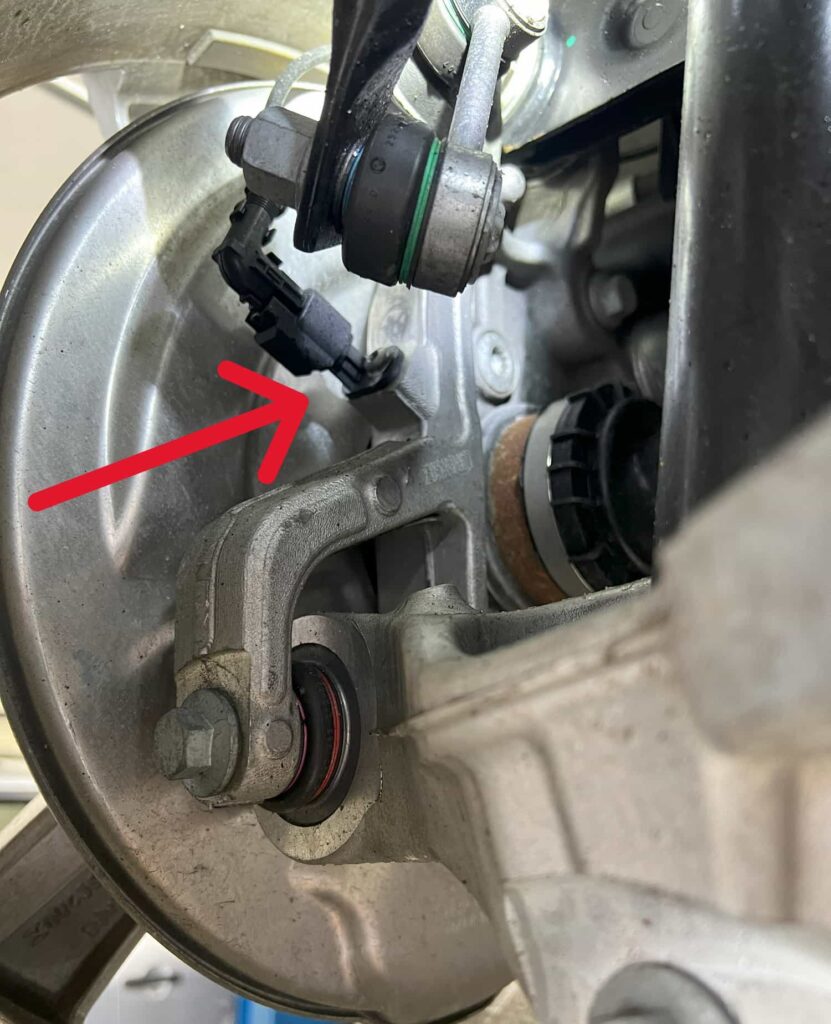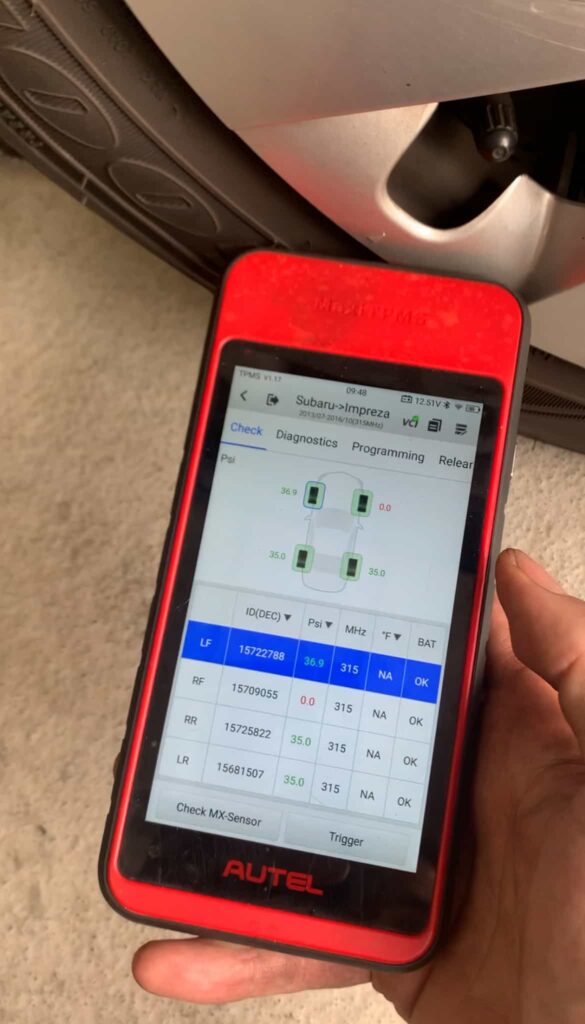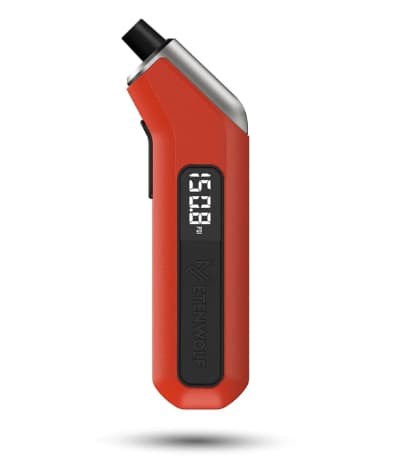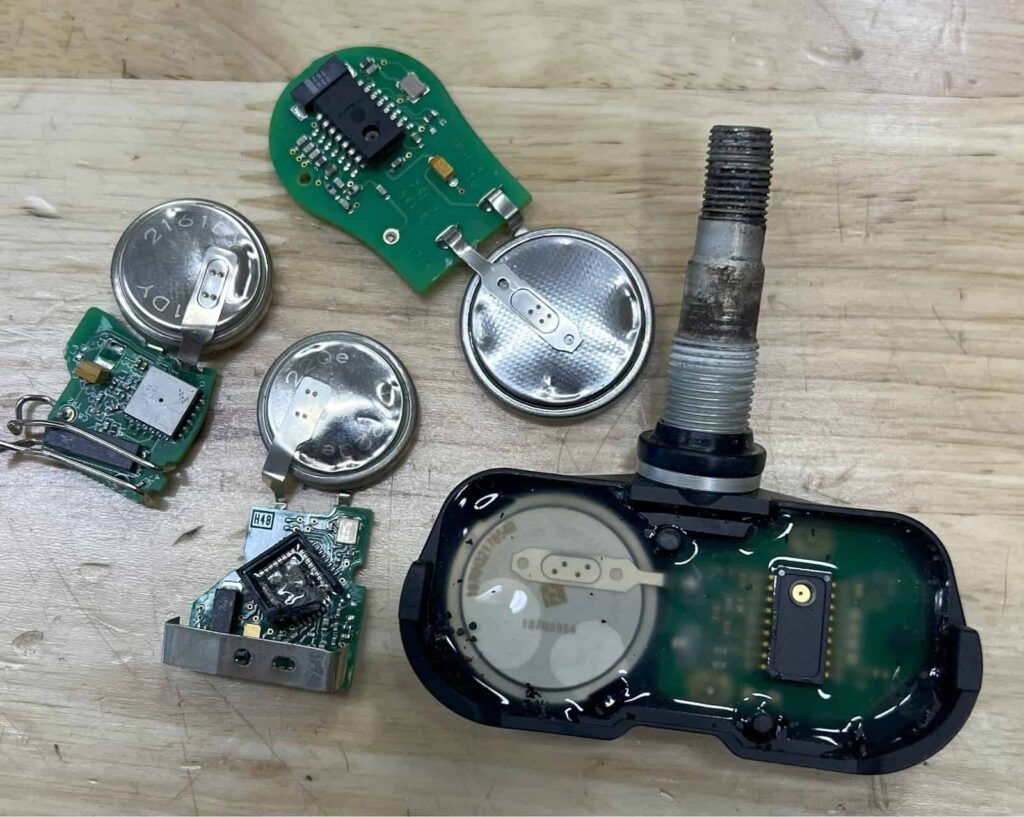Resetting the BMW TPMS Light
2022- Present BMW iDrive
Inflate all 4 tires to the recommended air pressures stated on the sticker inside the driver side door panel.
Turn the ignition ON.
Select the MENU button above the iDrive wheel.
Scroll down and select CAR.
Select VEHICLE STATUS.
Select TIRE PRESSURE MONITOR.
Select TIRE SETTINGS.
Select SAVE TIRE SETTINGS.
Drive your vehicle for a few minutes exceeding 20 mph or until the “resetting tire pressure monitor” message disappears under the speedometer.
After Swapping From Summer to Winter Tires
Inflate all 4 tires to the recommended air pressures stated on the sticker inside the driver side door panel.
Turn the ignition ON.
Select the MENU button above the iDrive wheel.
Scroll down and select CAR.
Select VEHICLE STATUS.
Select TIRE PRESSURE MONITOR.
Select TIRE SETTINGS.
Select SUMMER or WINTER from the tire type option.
Select PERFORM RESET.
Drive your vehicle for a few minutes exceeding 20 mph or until the “resetting tire pressure monitor” message disappears under the speedometer.
2018-2022 BMW iDrive
Inflate all 4 tires to the recommended air pressures stated on the sticker inside the driver side door panel.
Turn the ignition ON.
Select the MENU button above the iDrive wheel.
Scroll through the menu and select MY VEHICLE.
Scroll down and select VEHICLE STATUS.
Select TIRE SETTINGS in the tire pressure monitor menu.
Select PERFORM RESET.
Drive your vehicle for a few minutes exceeding 20 mph or until the “resetting tire pressure monitor” message disappears under the speedometer.
2014-2018 BMW iDrive
Inflate all 4 tires to the recommended air pressures stated on the sticker inside the driver side door panel.
Turn the ignition ON.
Select the MENU button under the iDrive wheel.
Select VEHICLE INFO.
Select VEHICLE STATUS.
Select PERFORM RESET (second icon down).
Select PERFORM RESET.
A prompt will read “Tire pressures will be measured while driving”.
Drive your vehicle for a few minutes exceeding 20 mph.
2008-2013 BMW iDrive
Inflate all 4 tires to the recommended air pressures stated on the sticker inside the driver side door panel.
Turn the ignition ON.
Select the MENU button under the iDrive wheel.
Use the Wheel to select VEHICLE INFO.
Select VEHICLE STATUS.
Select the second tire pressure icon TIRE PRESSURE RESET.
You will be prompted on the screen, select RESET.
A message will display “Status; Resetting TPM”.
Drive the vehicle for a few minutes exceeding 20 mph.
2009-2011 BMW Without iDrive
Inflate all 4 tires to the recommended air pressures stated on the sticker inside the driver side door panel.
Start engine.
Using the scroll switch on the turn signal stalk, cycle through the options on the instrument cluster display until you see the TPMS symbol accompanied by either the word “RESET” or “INIT.”
Once the RESET or INIT option is displayed, press the button located at the end of the turn signal stalk to select it.
After selecting RESET or INIT, continue holding down the button at the end of the stalk for approximately 5 seconds. The display should then show “resetting,” indicating that the TPMS reset procedure has been initiated.
Drive the vehicle for a few minutes exceeding 20 mph.
2007-2010 BMW Without iDrive
Inflate all 4 tires to the recommended air pressures stated on the sticker inside the driver side door panel.
Start engine.
Press the scroll button on the turn signal stock up or down until the TPMS symbol and the word RESET appear.
Press the button on the end of the stalk to confirm selection of Run Flat Indicator.
Press and hold for five seconds until a check/tick appears after RESET.
Drive the vehicle for a few minutes exceeding 20 mph.
What Else Can I Do if the BMW Low Tire Light Won't Turn Off?
If following the BMW TPM reset procedure did not turn off the dashboard tire pressure warning light, try some of these TPMS solutions:
Disconnect the negative battery terminal for a few seconds to reset the Lexus computer system, potentially clearing TPMS faults.
Deflate each tire by around 10 psi, then reinflate to recommended pressure; drive for at least 10 minutes at 20+ mph and then follow TPMS reset procedure.
Use a TPMS diagnostic tool to scan sensors and identify any malfunctioning units, which is often the cause of warning light.
Inspect the tires for leaks by spraying soapy water on the tread and around the tire beads and valve stems after inflating to locate any air leaks.
Older BMW vehicles (2008 and older) used indirect tire pressure systems. Make sure all wheel speed sensors are functioning as well as using the OEM wheel and tires sizes.
How Does the BMW Tire Pressure Monitoring System Work?
BMW Direct Tire Pressure Monitoring Systems (With TPM Sensors 2010 - present)
BMW’s direct TPMS has pressure sensors mounted on the base of each valve stem inside the tire. These sensors contain a pressure transducer that continuously measures the air pressure within the tire. The sensor also has a small radio frequency (RF) transmitter that wirelessly sends this pressure data, along with the sensor’s unique ID and other information like temperature, to the vehicle’s central TPMS receiver unit.
The TPMS receiver is typically located underneath the rear parcel shelf or trunk area. It has an antenna that can pick up the RF signals from each of the wheel TPMS sensors. The receiver decodes this data and relays it through the vehicle’s controller area network (CAN-bus) to the instrument cluster.
The instrument cluster has the TPMS warning light and can display each tire’s specific air pressure readings. If any tire deviates from the recommended pressure range, the TPMS light illuminates to alert the driver. Post 2010 BMW models can even show the location of the underinflated tire on the display screen.
To ensure robust signal reception, many BMW models have additional TPMS antenna units mounted inside the wheel wells near each tire sensor. This allows the system to periodically activate each sensor to receive fresh pressure data, even when the vehicle is parked.
Each tire pressure sensor has its own small battery with a lifespan of around 5-10 years or 100,000 miles depending on the model. When batteries run low or out of juice, the TPMS warning light will indicate a sensor fault by flashing, prompting replacement of the faulty sensor unit.
BMW Indirect Tire Pressure Monitoring Systems (Without TPM Sensors, 2002-2009 Known as FTM Systems)
On some earlier BMW models built between 2002-2008, an indirect Tire Pressure Monitoring System called the Flat Tire Monitor (FTM) was used instead of direct TPMS sensors. The FTM did not actually measure tire pressure directly, hence the name indirect.
Instead, it monitored data from the wheel speed sensors that are part of the anti-lock braking system (ABS). As a tire’s air pressure drops, its diameter slightly changes, causing a difference in its rotational speed compared to the other wheels.
BMW’s FTM system analyzed these wheel speed signals using an algorithm in the ABS control module. If one wheel was rotating at a significantly different speed than the others over a period of time, it would determine that the tire had low pressure and trigger the TPMS light on the dash.
While indirect systems could detect a severely underinflated tire, they were not as accurate or proactive as direct TPMS in catching slow air leaks. The FTM also could not provide specific pressure readings for each tire.
BMW phased out indirect TPMS in favor of the more advanced direct sensor systems by around 2007, as direct TPMS became required on all new vehicle models
Why is the Tire Pressure Monitor Light On?
• Underinflated Tires – This is the most common cause. The TPMS light comes on when one or more tires are 25% below the recommended pressure.
• Tire Damage or Puncture – A sudden flat or tire damage can trigger the TPMS light.
• Mismatched or Aftermarket Tires – Using different tire brands/models on the same vehicle can potentially confuse the TPMS system.
• TPMS Sensor Malfunction – The sensors inside the tire valve stems can fail over time, causing the light to flash and stay on.
• Low TPMS Sensor Battery – As the sensor batteries deplete, it can set off a sensor fault warning.
• Bent or Damaged Wheels – Wheels that are bent or out of round can affect tire circumference and set off the TPMS light.
• TPMS System Reset Issue – Not resetting the system after adjusting tire pressures.
• Temperature Changes – Drastic hot or cold weather can cause tire pressure fluctuations that trigger the light.
• Wheel Speed Sensors – For indirect TPMS, a faulty wheel speed sensor will trigger the tire light.
Why is My BMW Low Tire Pressure Light Flashing?
A flashing tire light on the dash means there is a communication breakdown between a tire pressure sensor and the BMW’s on board computer system. This typically means a TPMS malfunction rather than a tire with low tire pressure.
This issue is usually caused by a tire pressure sensor that is low on battery, is damaged, or has some electronic interference blocking its signal. We suggest using a OBD scan tool or TPMS diagnostic tool to determine which sensor is causing the problem so it can be replaced.
Is it Safe to Drive My BMW if the TPMS Light is Flashing?
As long as the air pressure in all of the tires are correct there is not a direct safety issue. The data being transmitted to your BMW dash may be incorrect or not show a pressure reading at all.
Why is the Low Tire Pressure Light on if My Tires Have Correct Pressure?
Even if your tires appear to have the recommended air pressure, the TPMS warning light can still illuminate due to other issues with the system itself. A faulty TPMS sensor, low sensor battery, or problems with the receiver module can all trigger the light. Temperature fluctuations can also cause temporary pressure changes that set off the light. If the pressures check out fine, the next step is diagnosing your BMW for a TPMS component failure.
Do I Need a TPMS Diagnostic Tool to Fix My BMW TPMS Light?
While not absolutely required, using a dedicated TPMS diagnostic tool can make pinpointing and repairing issues with your BMW’s tire pressure monitoring system much easier. These tools can read sensor IDs, battery status, and received signal strengths to isolate faulty components. They also allow you to program new sensors after replacements.
Without a tool, diagnosis relies more on manual mechanical checks and resets. If you are truly stumped by your tire pressure system, you will find out the true issue by using a TPMS diagnostic tool.
How Much Does it Cost to Replace a BMW Tire Pressure Sensor?
The cost to replace a single BMW TPMS sensor can range from $50 to $150 for the sensor itself. However, the labor charges from a BMW dealer can add $75 to $150 per wheel sensor replacement. So on average, expect to pay $125 to $300 per faulty TPMS sensor to have it properly replaced and programmed on your BMW by the dealer. Doing it yourself can save on labor but requires TPMS tools.
Do BMW Vehicles Have a Tire Pressure Sensor in the Spare Tire?
No, BMW vehicles do not include a TPMS sensor for the spare or temporary spare tire. Since the spare is meant for temporary low-speed use, having a sensor is deemed unnecessary by BMW.
Will the Spare Tire Trigger the TPMS Warning Light?
Yes because the system expects readings from four installed sensors and will detect the “missing” sensor from the non-monitored spare. However, the BMW tire light can be reset after remounting the full road tire set.
How Long Do BMW Tire Pressure Sensors Last?
Most BMW TPMS sensors have a battery lifespan of around 5-10 years of operation. However, exposure to extreme temperatures, tire replacements, or heavy mileage can shorten their usable life. Although completely unnecessary, many BMW owners choose to replace all four sensors during a full set of new tires as preventative maintenance.
Can I Disable My BMW Tire Pressure Monitor?
No you cannot fully disable the TPMS on a BMW. Removing the tire pressure sensors from each wheel will cause a permanent TPMS malfunction. Disabling your BMW TPMS will cause your vehicle to no longer meet federal safety standards for emissions monitoring.
My BMW Has Run Flats, Does it Still Have a TPMS Sensor Inside?
Yes BMW vehicles with run flat tires still have tire pressure sensors installed inside the tires.
For more information on BMW iDrive System: https://en.wikipedia.org/wiki/BMW_iDrive
BMW Vehicles
For BMW Owners who want to follow a specific TPMS Reset guide for there vehicle check out these article: BMW Z4, BMW 8 Series, BMW 7 Series, BMW 6 Series, BMW 5 Series, BMW 3 Series, BMW 2 Series, BMW 1 Series, BMW X7, BMW X6, BMW X5, BMW X4, BMW X3, BMW X2, BMW X1, BMW 435i, BMW 335
About the Author
STEFAN A.
Professional Automotive Technician – I am currently an automotive technician in New Jersey and have worked in private shops as well as dealerships. When I am not writing articles I am wrenching on race cars and driving radio controlled cars at the track!
Please note that this blog post contains Amazon affiliate links. This means that if you make a purchase through one of these links, we at TPMSRESET.COM may earn a small commission at no extra cost to you. We only recommend products that we personally use and believe in. Thank you for supporting us.
dfd


